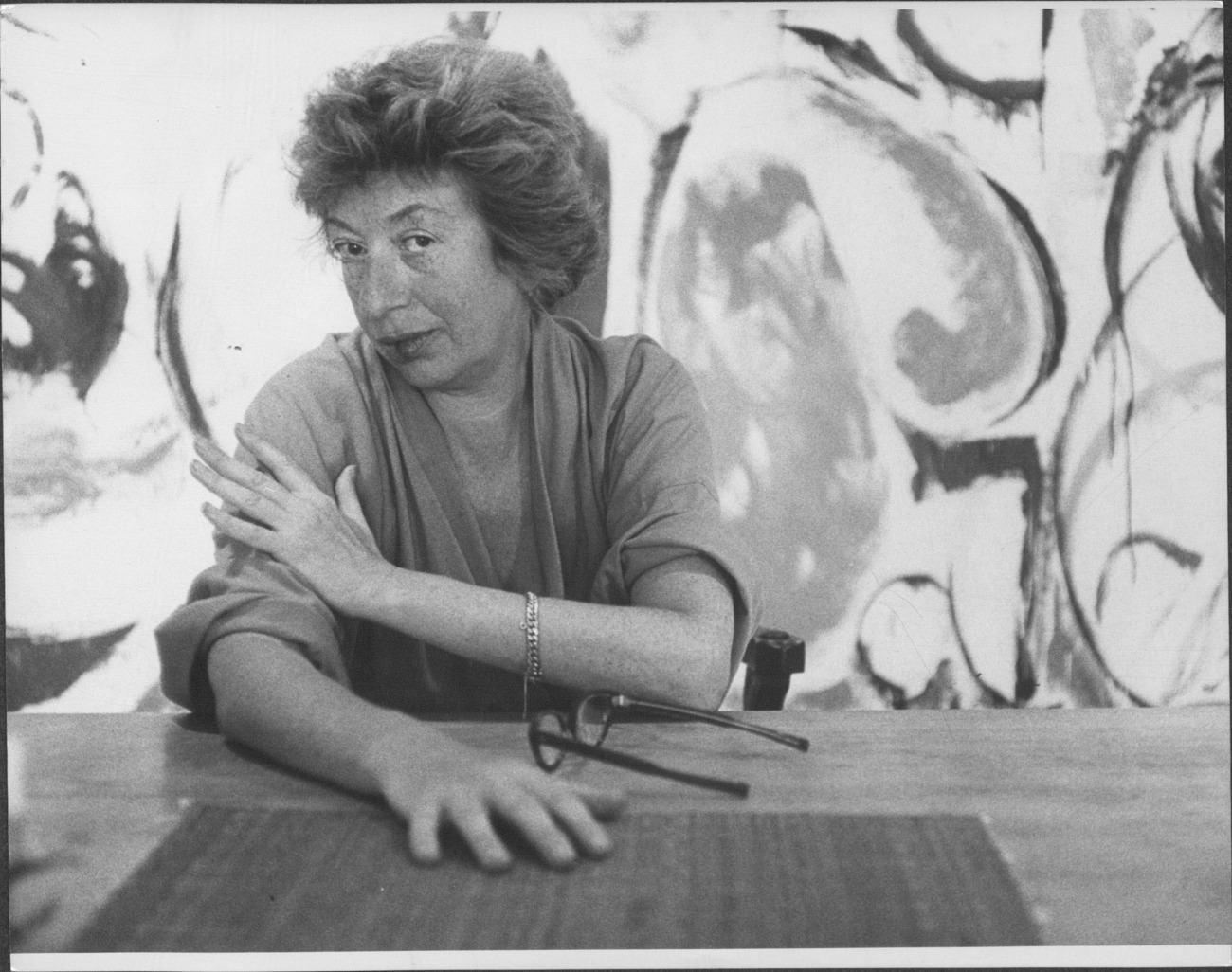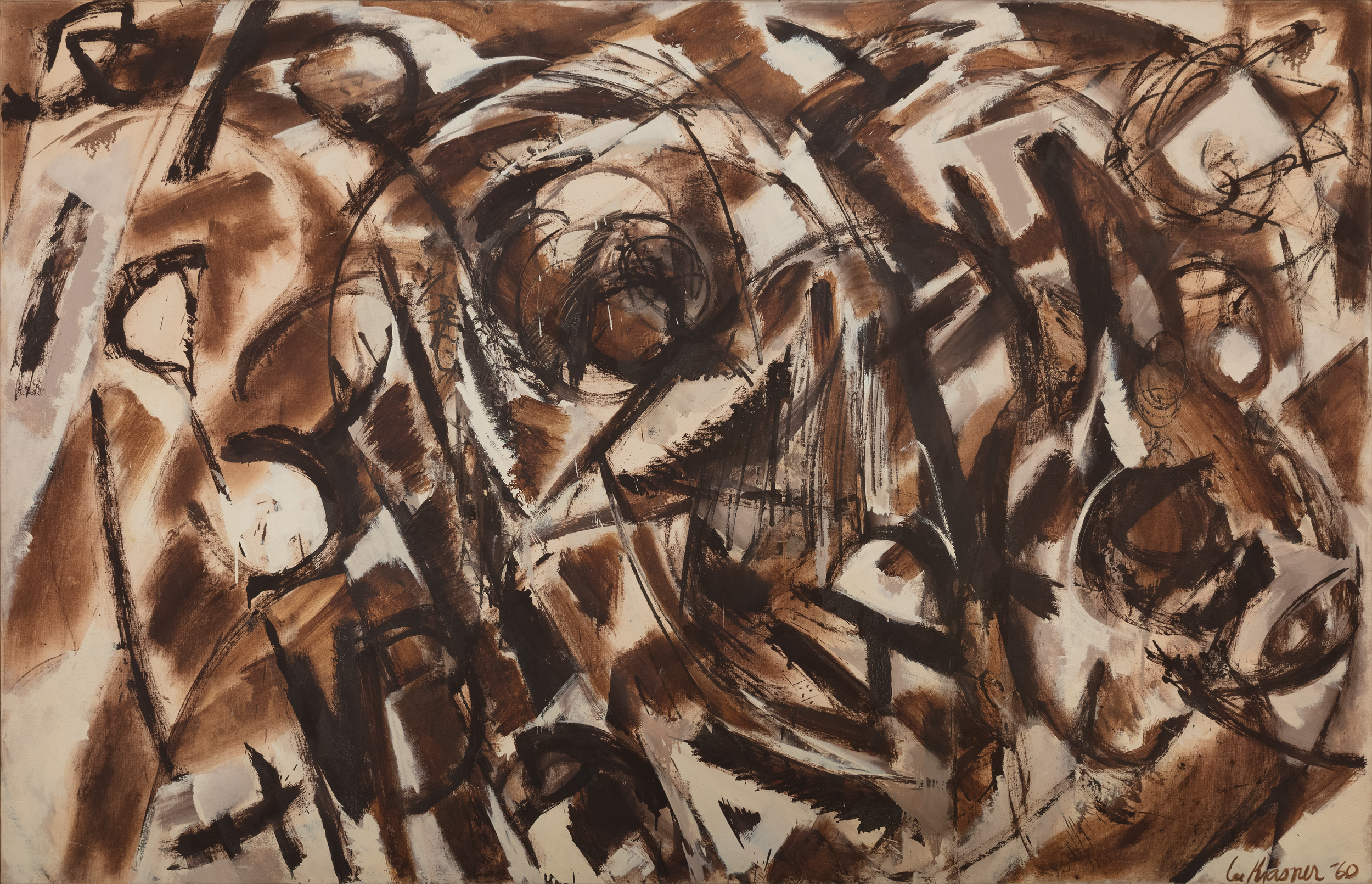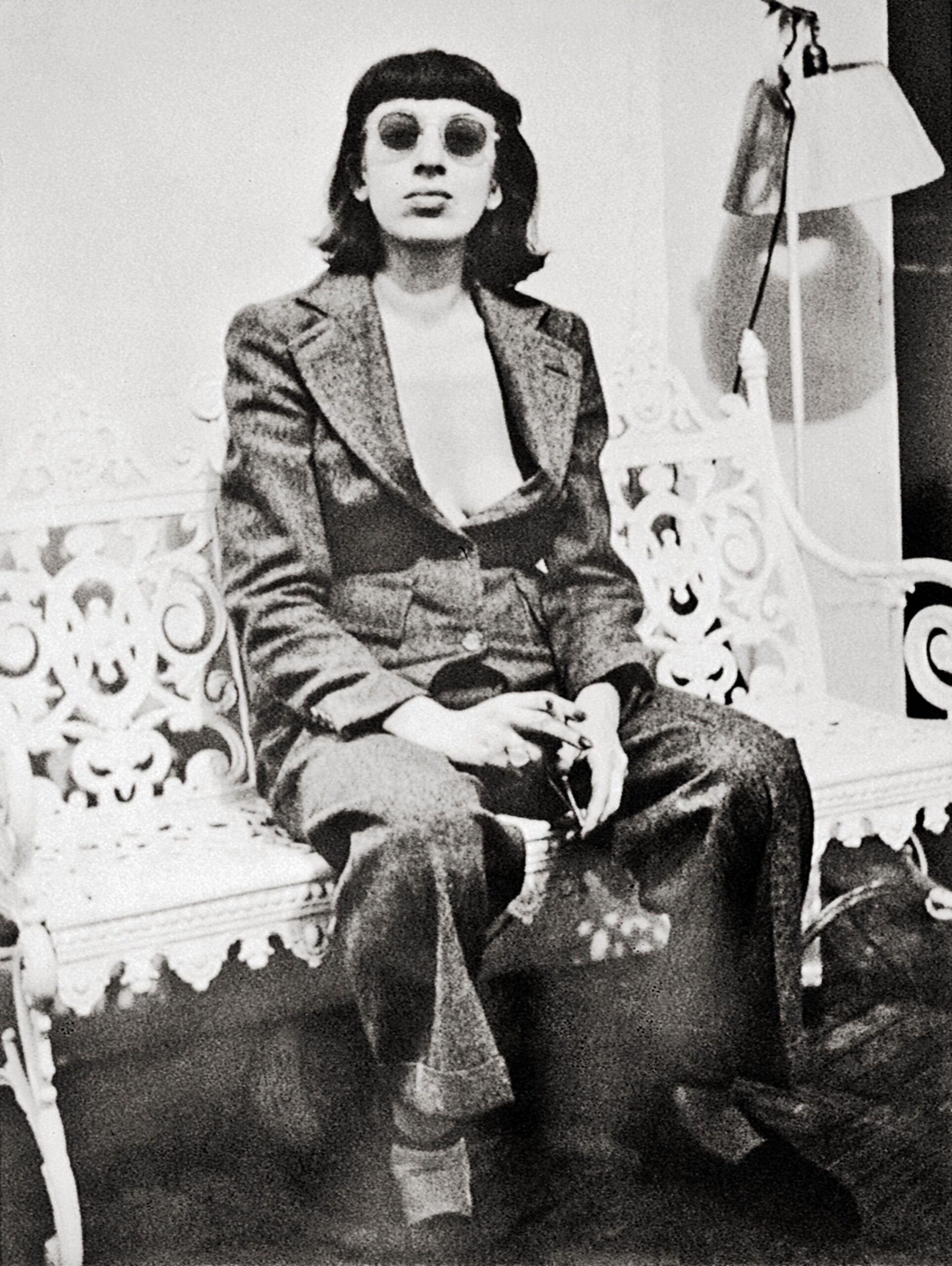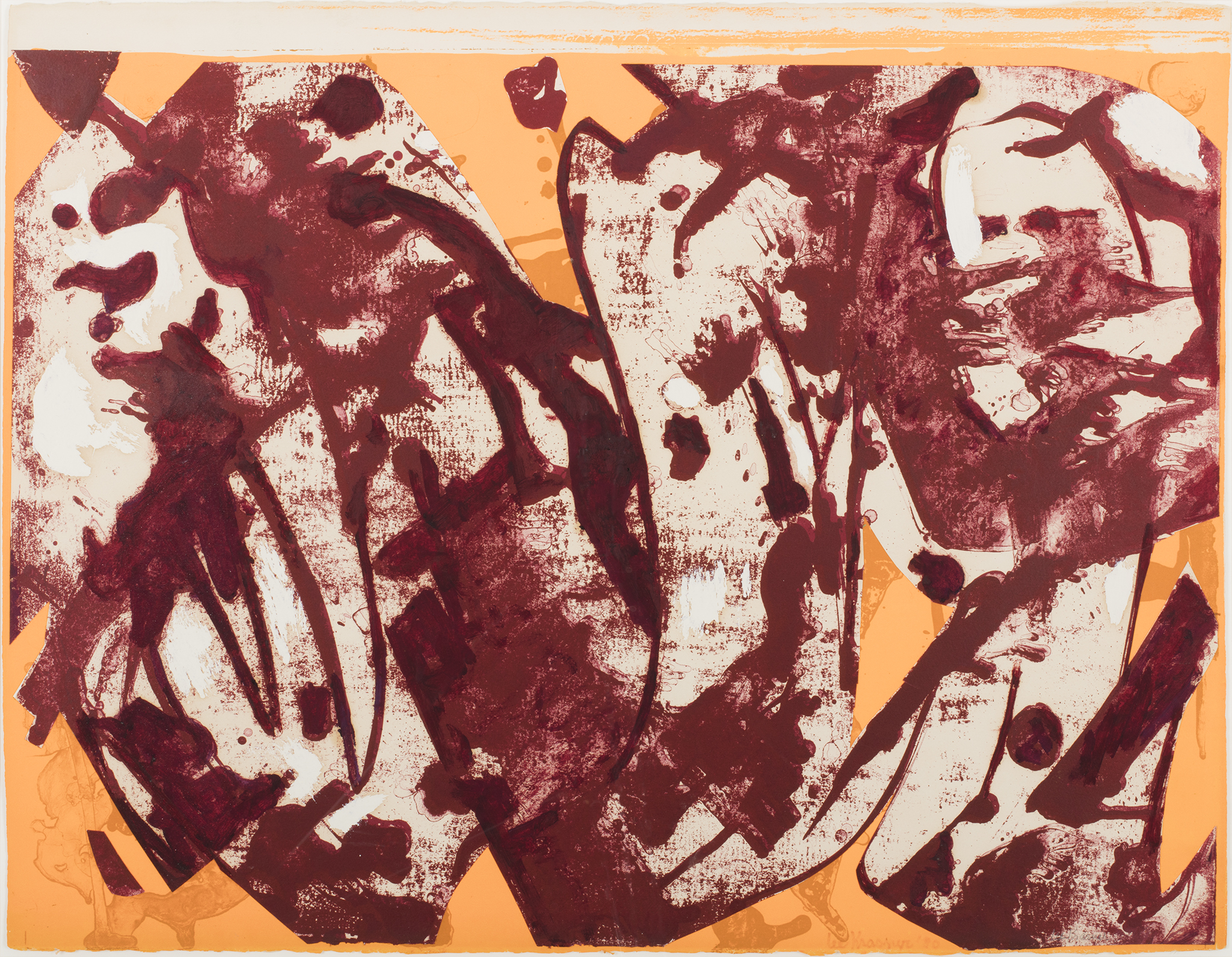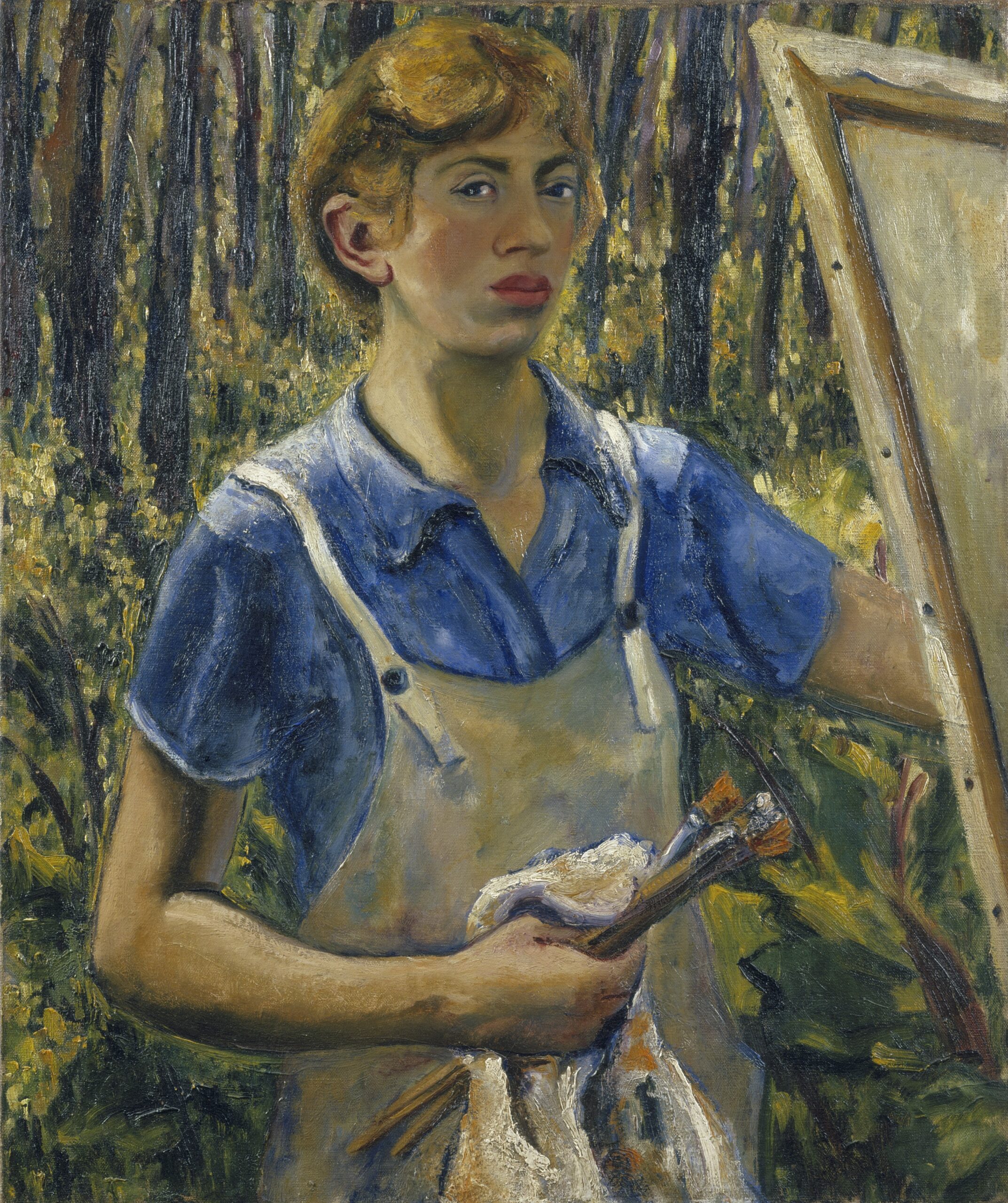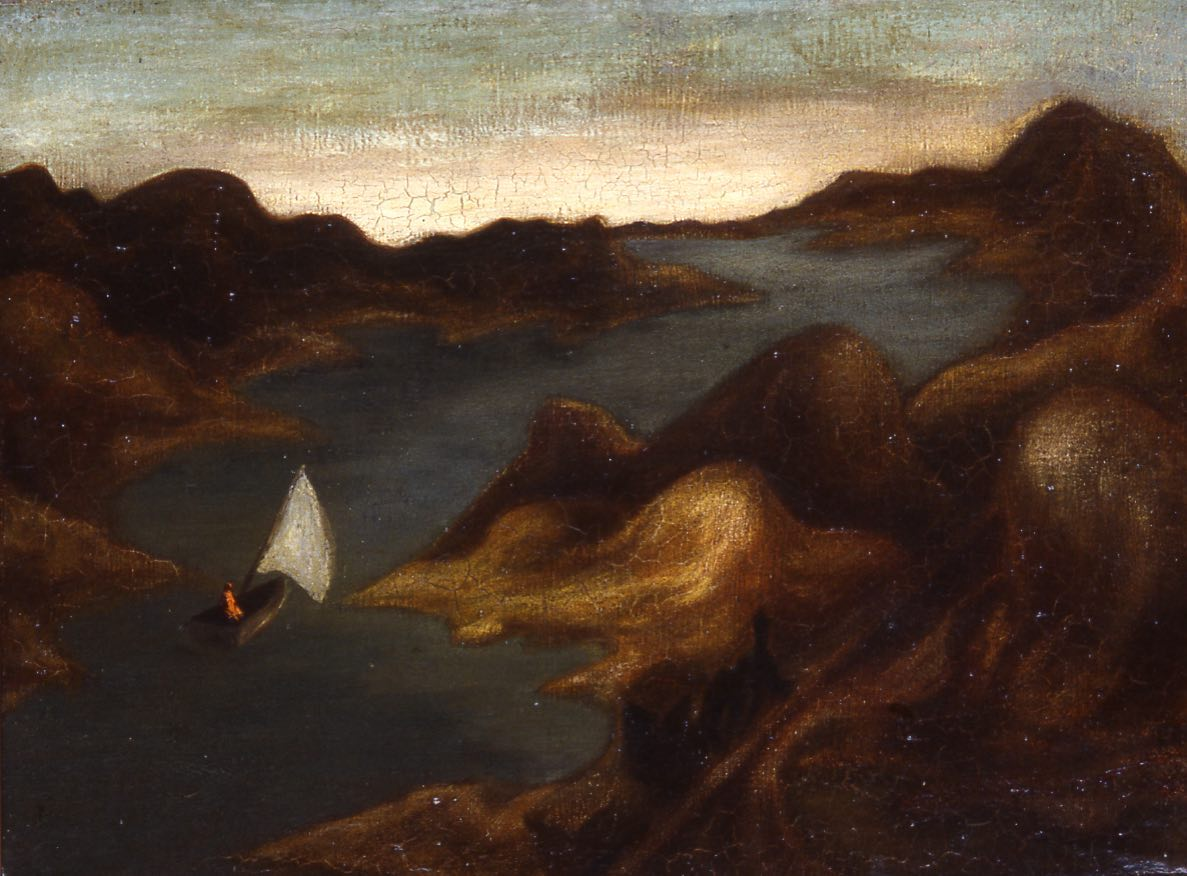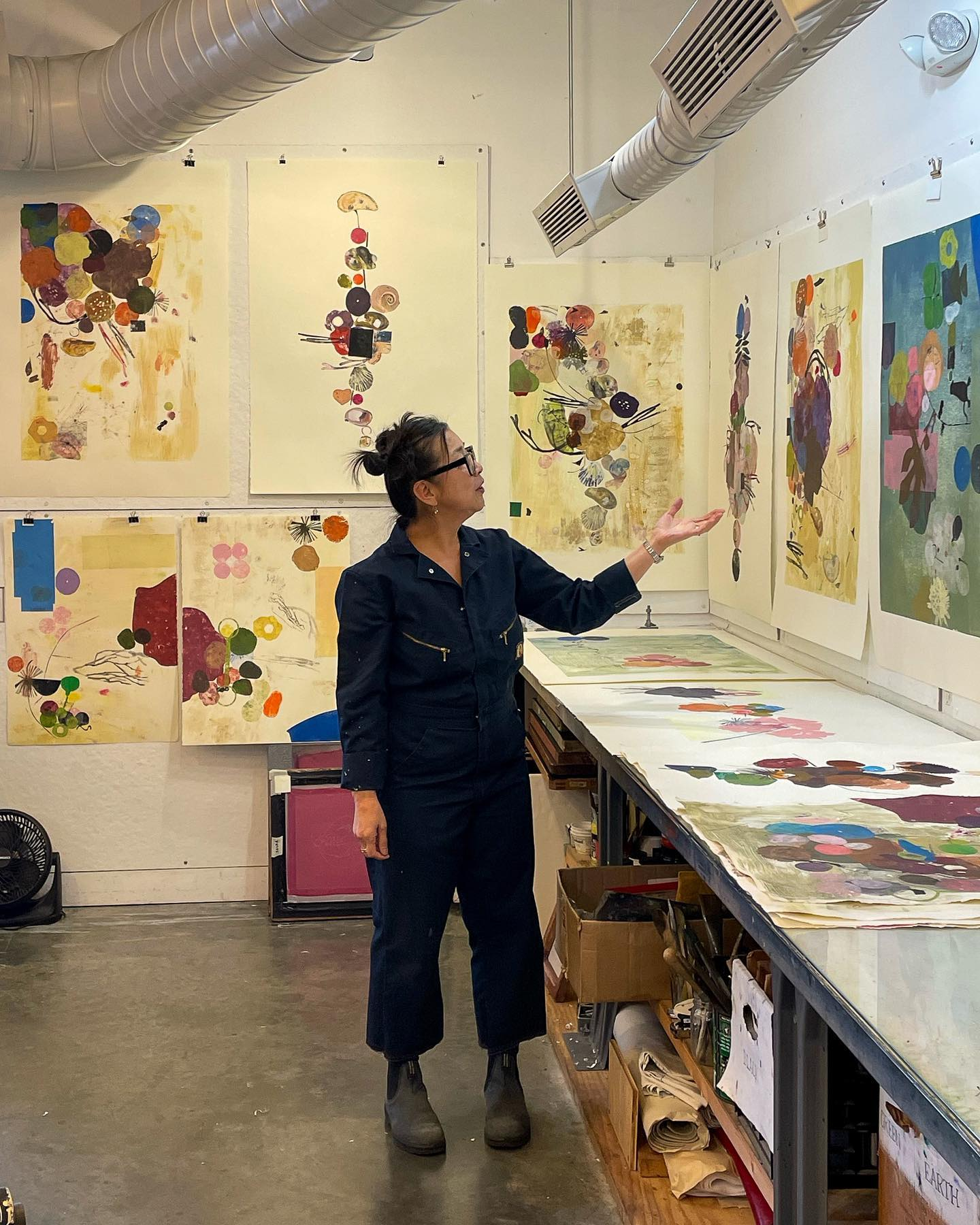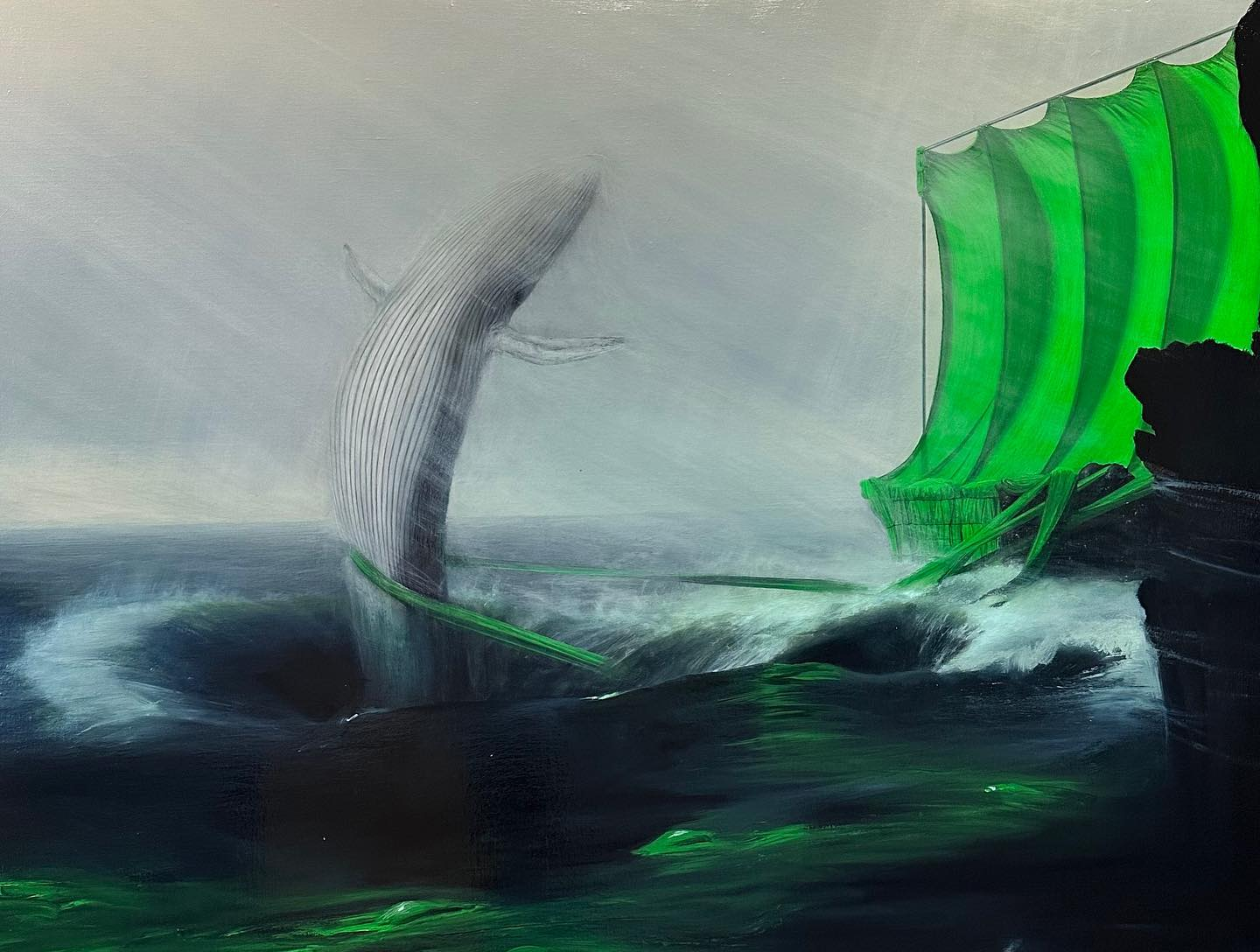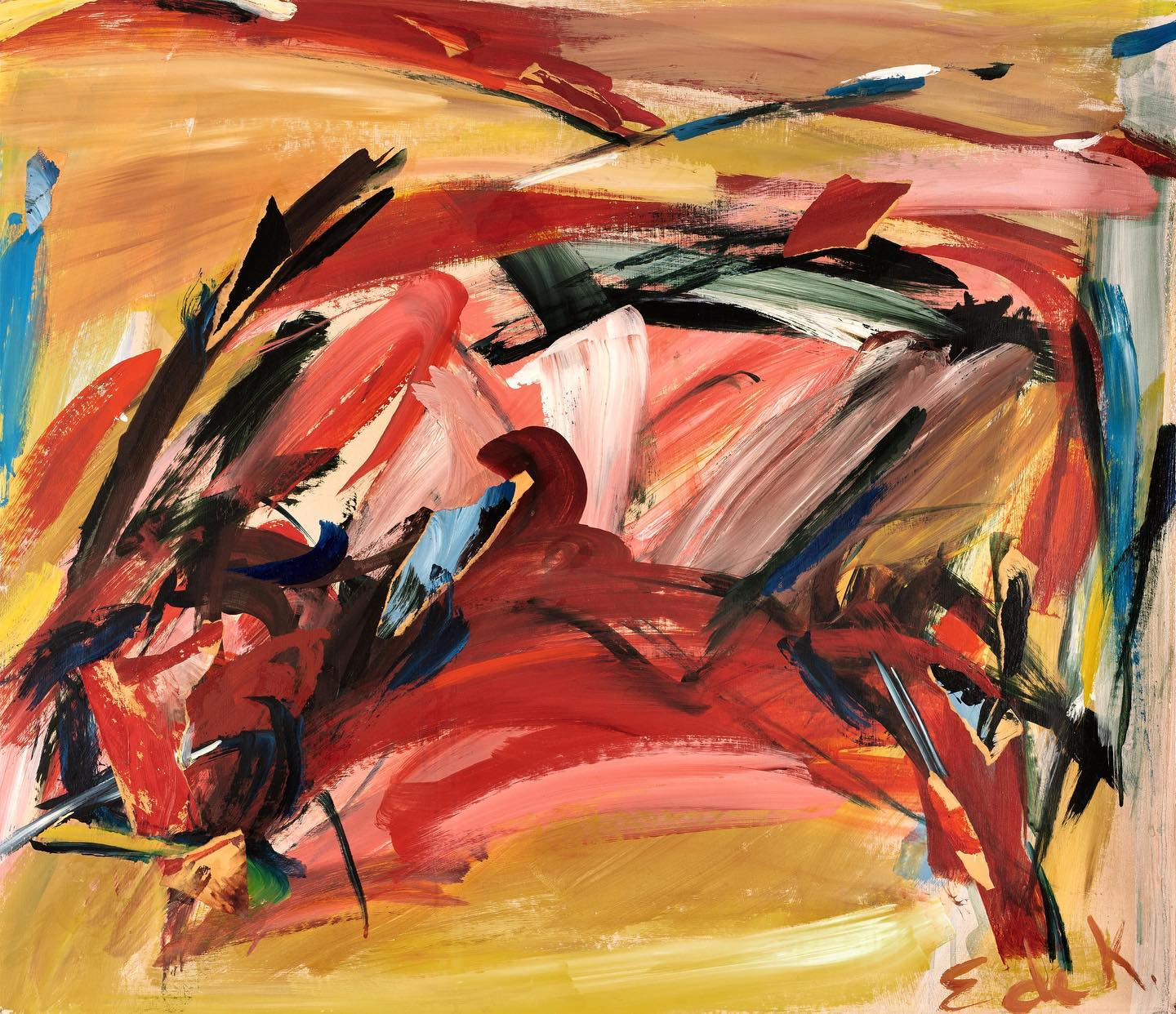Lee Krasner
Lee Krasner in front of The Gate (1959) before it was completed, Springs, 1959.
Photograph by Halley Erskine. Jackson Pollock and Lee Krasner papers, circa 1914-1984. Archives of American Art, Smithsonian Institution. © 2025 Pollock-Krasner Foundation / Artists Rights Society (ARS), New York.
Lee Krasner is one of the most critical figures in the evolution of American art in the second half of the 20th century. Emerging from the first generation of Abstract Expressionist painters, Krasner committed to a six-decade persistent exploration of novel approaches to painting and collage.
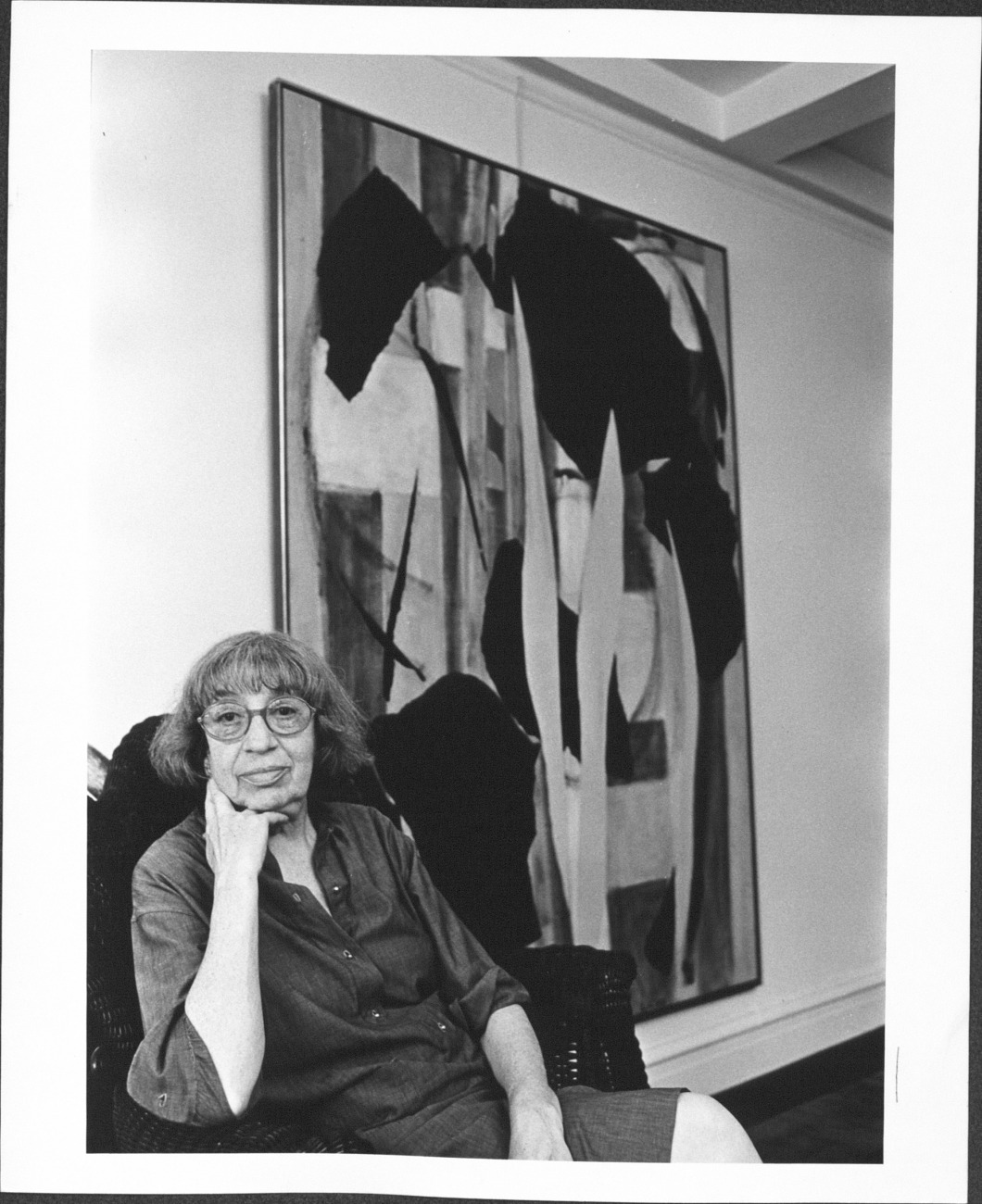
Lee Krasner, 1973.
Photograph by Iris Schneider.
Born in New York, to a Russian Orthodox Jewish family, Krasner pursued a formal art education at several institutions in New York, including the Women’s Art School of Cooper Union, the National Academy of Design, and the Art Students League. In 1937, Krasner began taking classes with Hans Hofmann, who would radically influence her mature, abstract style. Throughout the 1930s and 40s, Krasner became fully engaged in the New York art scene and integrated herself into contemporary circles. In 1945, three years after both exhibiting in the group exhibition French and American Painting, Krasner and Jackson Pollock married and moved to East Hampton, New York.
Living at their home near Springs, Krasner developed some of her most compelling series, including her Little Image paintings. Defined by thick impasto and repetitive abstract symbols, these works are recognized as among her most noteworthy contributions to Abstract Expressionism.
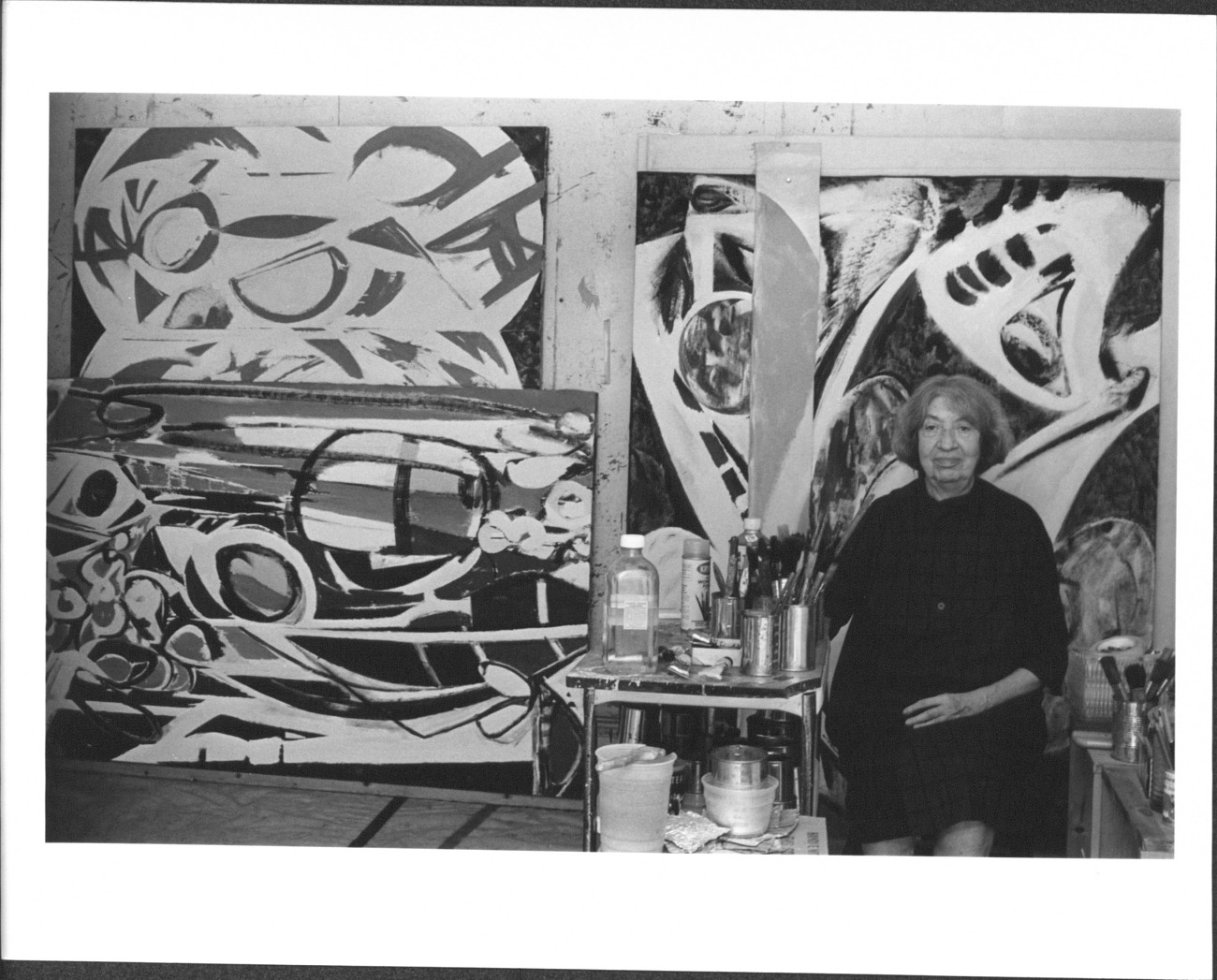
Portrait of Krasner, undated.
Jackson Pollock and Lee Krasner papers, circa 1914-1984. Archives of American Art, Smithsonian Institution.
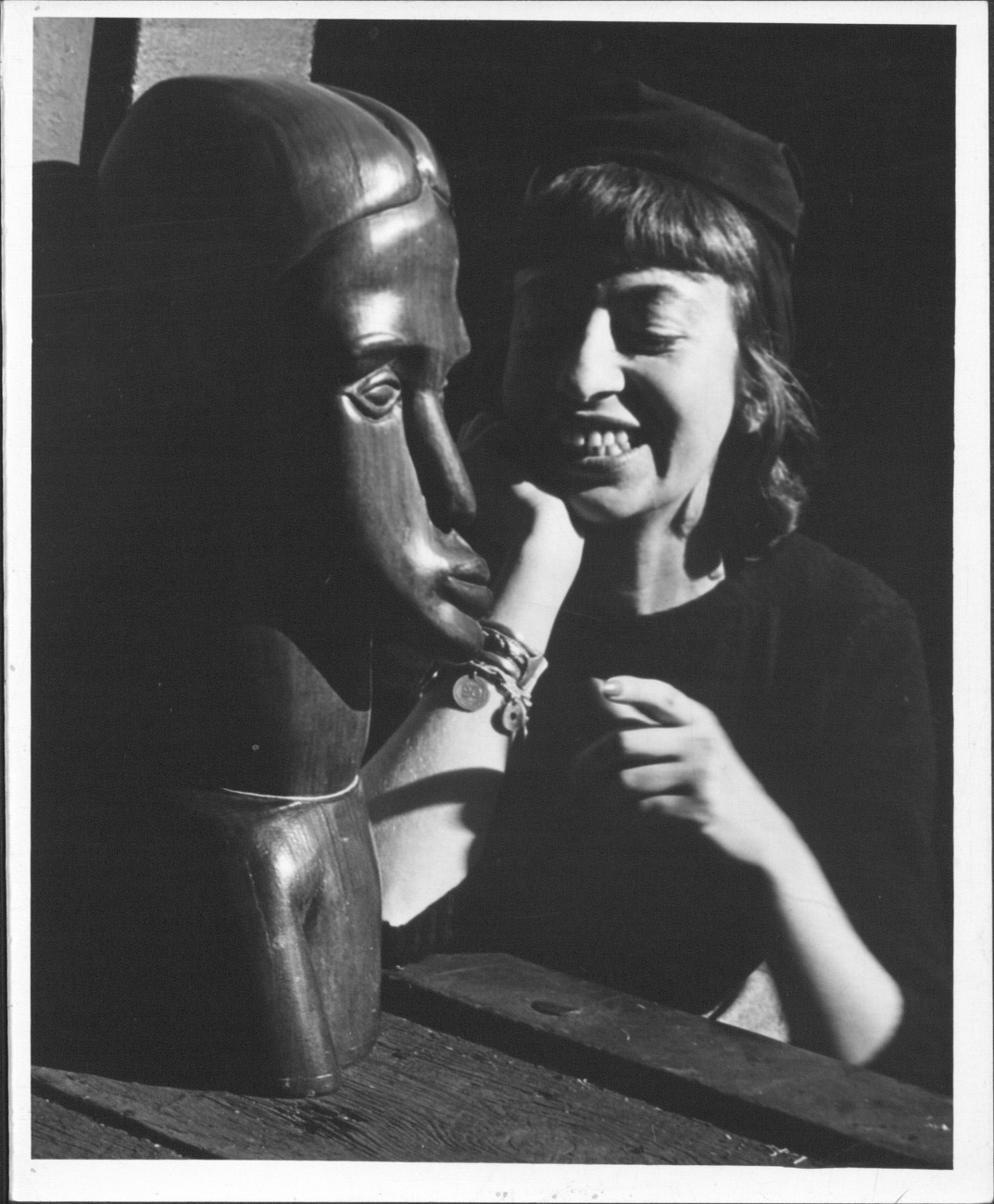
Lee Krasner at the WPA Pier, circa 1942.
Jackson Pollock and Lee Krasner papers, circa 1914-1984. Archives of American Art, Smithsonian Institution.

Painting is not separate from life. It is one. It is like asking—do I want to live? My answer is yes—and I paint. 
Lee Krasner, Palingenesis, 1971
© Pollock-Krasner Foundation / Artists Rights Society (ARS), New York
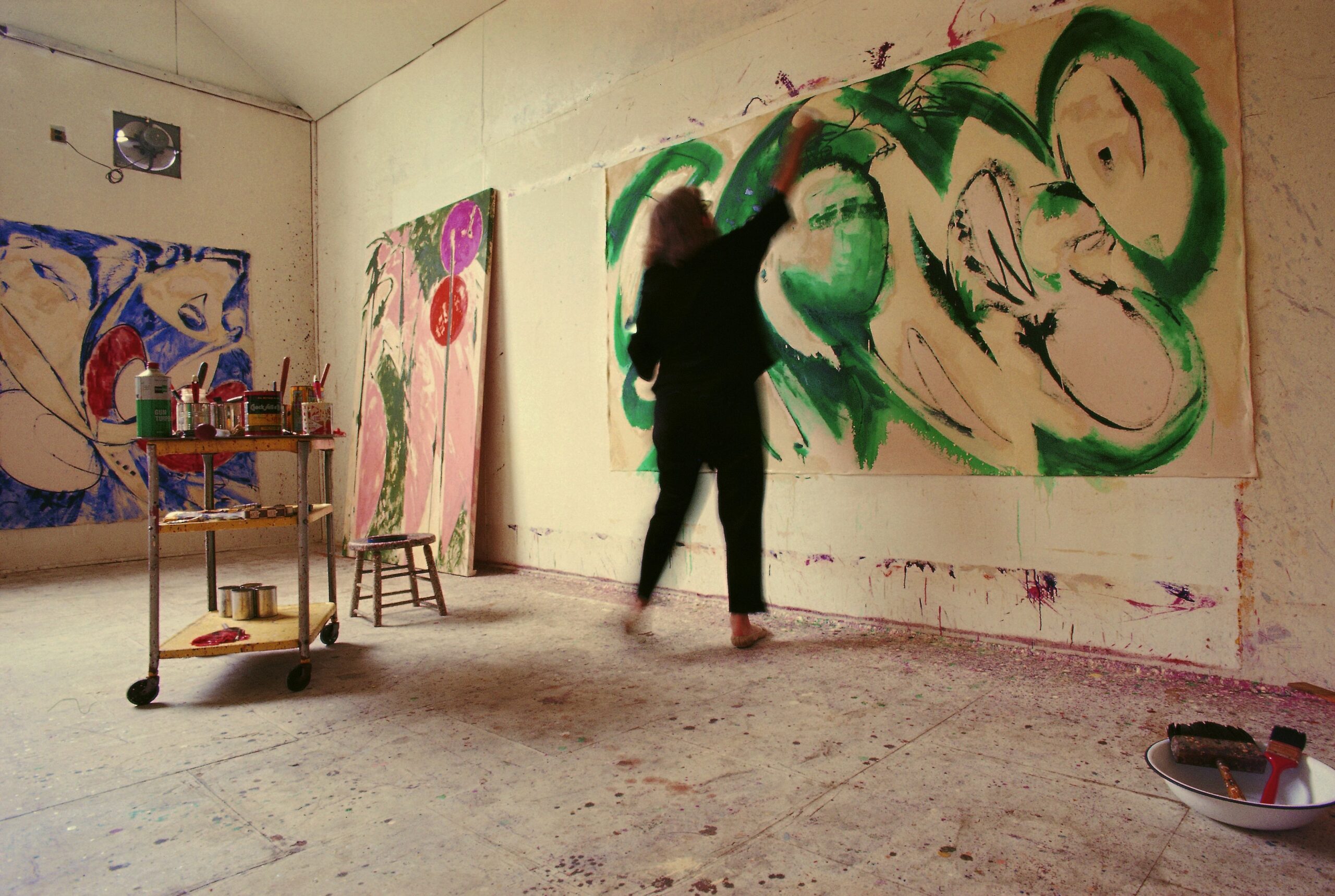
Mark Patiky, Lee Krasner at work on Portrait in Green, 1969.
© Mark Patiky digital prints from Kodachrome transparencies, 9 ¾ x 14 ¼ inches. Pollock-Krasner House and Study Center, gift of Mark Patiky.
Following Pollock’s unexpected death in 1956, Krasner dedicated the remainder of her life to solidifying Pollock’s legacy, while continuing her own artistic endeavors. During this time of newfound solitude, Krasner realized her iconic Umber Paintings, which convey a distinctive rawness and intensity that was unprecedented in her oeuvre until this point. Fiercely composed of abstract forms through explosive brushwork in a pared-down palette of primarily umber, cream, and white, this series is considered among Krasner’s most psychoanalytically evocative work.
With paintings from the 1960s, Krasner expanded her artistic achievements in size, all-over composition, and gestural method. Reflecting on work from this period, in 1973, Krasner remarked: “My painting is so biographical, if anyone can take the trouble to read it.” This assertion is evident especially in works from the 1960s, which were particularly poignant and personal modes of expression for the artist.
Krasner’s work is held in the permanent collections of major institutions worldwide, such as the Metropolitan Museum of Art, New York; Museum of Modern Art, New York; Jewish Museum, New York; Whitney Museum of American Art, New York; Brooklyn Museum, New York; Albright-Knox Art Gallery, Buffalo; National Gallery of Art, Washington, DC; Hirshhorn Museum and Sculpture Garden, Washington, DC; Tate, London; Cleveland Museum of Art; Los Angeles County Museum of Art; Kleefeld Contemporary Art Museum, Long Beach; Museum of Contemporary Art, Los Angeles; Philadelphia Museum of Art; National Gallery of Australia, Canberra; Glenstone Museum, Potomac, MD; and the Artizon Museum, Tokyo, Japan, among many others.
Biography courtesy of Kasmin Gallery
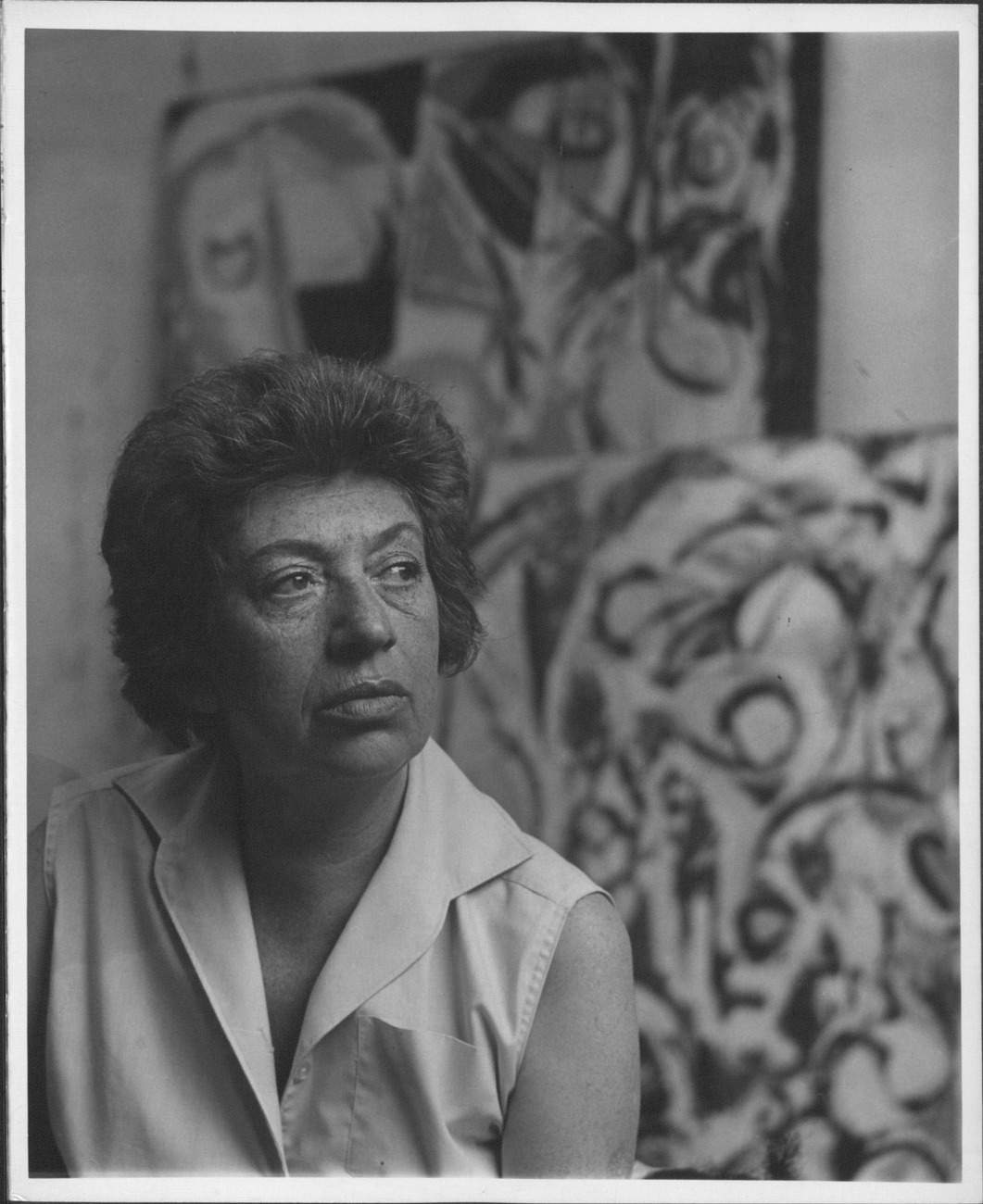
Portraits of Krasner by Paul De Vries, circa 1960-1961.
Jackson Pollock and Lee Krasner papers, circa 1914-1984. Archives of American Art, Smithsonian Institution.
